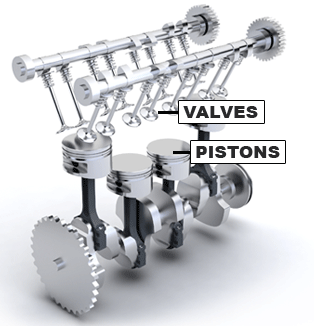How to Test Car Engine Pistons

If you want to know what is happening inside the engine of your car, there is no need to necessarily open the engine completely. Instead, one of the possible ways is to run a compression test on the pistons of your car engine. The assembly of cylinder walls, valves, seals, pistons and rings make a seal; facilitating kinetic energy to run the car by pushing the pistons into the cylinders. Your car’s engine will cease to work properly when these engine parts wear out with the passage of time.
Things Required:
– Compression tester
– Motor oil
Instructions
-
1
The results of the compression test would be more accurate when the engine is warm rather than cold. Start the engine and allow it to run for about 5 minutes. This will warm up the engine considerably so that the results you get would be accurate. Furthermore, the car’s battery has to be in good shape since it will have to spin the engine for quite a few times.
-
2
When the engine is fairly warm, stop it and then remove the spark plugs. This is to ensure that the starter can freely spin the engine. After you are done removing the spark plugs, disable the car’s ignition system. A possible way to accomplish this is to pull the coil wire.
-
3
Take the compression tester and insert it into one of the empty holes that were made when you removed the spark plugs. Crank the starter so that engine can be rotated. This practice will build compression in the cylinder into which you had inserted the compression tester. Test all the cylinders in a similar manner; removing the compression tester from one spark plug and inserting it into the next one.
-
4
Make a comparison between each of the compression numbers you record. The reading for all cylinders should not differ more than 10 PSI of each other. There would be a problem with cylinders which exhibit a difference of 15 PSI or more.
-
5
Inject a few drops of motor oil in the problematic cylinder(s). Repeat the compression test once again. If the new compression number is greater than the one you previously recorded, then the piston rings and walls of the problematic cylinder are worn. If the new reading is the same as before or is very low, the problem is being caused by worn valves.







